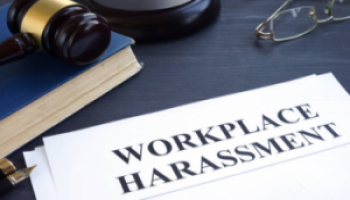Workplace harassment occurs when an employee or group of employees feel threatened or get belittled by their colleagues. The sole purpose of a workplace harasser is to make their victims feel unsafe and uncomfortable.
Workplace harassment goes by various names like- “workplace bullying,” “mobbing,” “workplace aggression,” etc.
Harassment incorporates various kinds of segregation and demonstrations of infringement that is not confined to one specific group. Harassment occurs when people target multiple groups, including women, racial minorities, sexual minorities, people with disabilities, and immigrants. Fundamentally, workplace harassment requires a pluralistic arrangement since it can’t be outlined in one cognizant and solid definition.
Types of Workplace Harassment
Workplace harassment might or might not have any kind of physical evidence, but we can’t deny it exists. Workplace harassment includes offensive jokes, bullying, slurs, epithets, physical assaults, intimidation, ridicule, insults, offensive objects or pictures, and interference in work performance.
Harassment at the workplace can be of any type, whether verbal or physical harassment, sexual favors, psychological, emotional, etc. There are five major types of workplace harassments, they are:
- Verbal harassment
- Psychological harassment
- Cyber bullying
- Sexual harassment
- Physical harassment
Now, let’s have a closer look and help you identify these types of harassment at your workplace.
Verbal Harassment
Victims of verbal harassment often face an ongoing battle of destruction that threatens their health and career equally. Verbal harassment consists of demeaning slurs, offensive gestures, and unwarranted criticisms.
Since this is a non-physical form of violence, it includes insults like fat-shaming/body shaming jokes, hurtful comments, and unwanted taunting, thus, often challenging to recognize. As it is a gray area, HR managers and leaders must be vigilant to notice such harassing behaviors.
Psychological Harassment
Psychological harassment is somewhat similar to verbal harassment, but it is more covert and consists of tactics like withholding information. Victims who face such harassment are more likely to suffer mental breakdowns, low self-esteem, and tend to undermine themselves.
Psychological harassment includes taking credits for others’ achievement, making impossible demands, imposing impossible deadlines on an employee, forcing someone to work outside their job scope, etc. This is a form of deliberate psychological bullying.
Cyber bullying
Digital harassment or cyber bullying is the newest form of harassment. Even though it happens online, it is as derogatory as physical bullying.
Digital harassment includes posting threats or demeaning comments on social media, creating a fake persona to bully someone online, creating a webpage about the victim to mock and belittle them, and making false allegations online.
Usage of social media has become a norm in any workplace. Hence in the name of free speech, anyone can harass anyone digitally. People can make fake personas to demean or bully their colleagues.
But, there is also good news about digital harassment- victims can document it. Someone who faces such bullying and discrimination can document these incidents in screenshots, saved e-mails, etc.
Doing so, victims of workplace harassment can easily report such offensive behaviors.
Sexual Harassment
Sexual harassment at the workplace is a heinous crime and more common than you might think. It is an offense that is not specific to women only. A person belonging to any gender can be the victim or the perpetrator of sexual harassment.
Unwanted touching, sending obscene messages and videos, asking for sexual favors, comments including vulgar gestures are a few signs of sexual harassment.
Most of the time, these incidents go unnoticed and unreported, and because of this, offenders often get away with their conduct. Many victims do not want to speak only about this as they think it will get better, but no, it only worsens. However, if someone is a sex offender and is making someone uncomfortable, one must report.
Physical Harassment
Physical harassment in the workplace has many degrees. Such harassments include improper touching of clothing, skin, physical assaults, threats, or damaging personal property.
People belonging to gender minorities and LGBT communities are more likely to face such kinds of harassment at work. Offenders can downplay some harassments in the form of jokes, not causing physical harm; in such cases, it gets difficult to identify physical harassments.
Even if there is no severe physical harm, it can still be considered physical harassment. If a situation becomes violent, employees must file a complaint and take strict actions against the offenders.
How to Report Workplace Harassment?
Every organization has a human resource department and is intended to help employees who need help in serious situations. Whether they feel uncomfortable or in danger, or are threatened by a colleague, good HR practices ensures their safety and job security.
Most grievances or harassing conducts lack physical evidence, but that must not deter a victim from filing an official complaint.
Reporting workplace harassment is necessary, as there might be complaints from other victims who might have reported similar offenses by the same offender.
Many organizations have proper conduct and strict anti-harassment policies, while some smaller organizations may not. We encourage employees, and most importantly, leaders and HR managers to take the following steps-
- Try to have a one-to-one conversation with the harasser calmly. Ask them to stop directing such derogatory behavior towards your employees(victims). However, if the abuse is physical, do not approach the harasser; instead, take direct actions.
- If your employee complains about harassment and you see that the perpetrator is in a leadership position, escalate the issue to the attention of HR if your attempts to resolve it with the harasser fail. Consider providing evidence if you have any, like screenshots, eyewitnesses, or text messages.
- As a manager, if you feel that your company did not deal with your employees’ complaints diligently, get in touch with DLIR, which can investigate the incident impartially. Help your employees get in touch with them as they have their own laws and agencies regulating workplace conduct.
Conclusion
A healthy, positive, and harassment-free workplace eradicates toxicity and helps in employee engagement and increased productivity. Thus, you must make sure your workplace does not encourage harassment and discrimination towards anyone.
We hope this article was helpful for you to understand and recognize workplace harassment.
source: https://blog.vantagecircle.com/workplace-harassment

